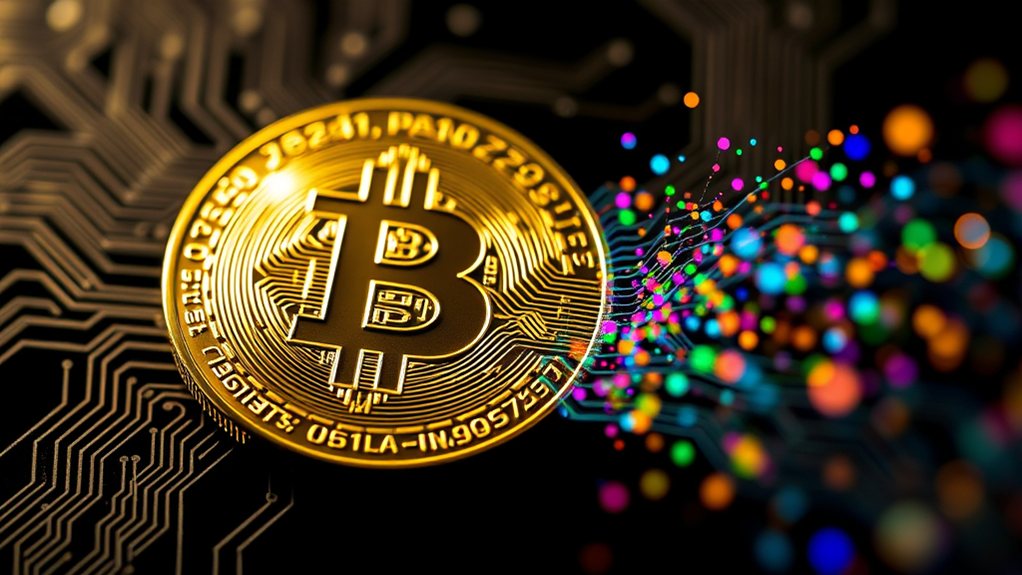Ordinals are a 2023 innovation that assigns unique numbers to individual satoshis (Bitcoin's smallest units) based on their mining order. Created by Casey Rodarmor, they allow users to attach data like images, text, or audio to these satoshis—creating Bitcoin-native digital assets similar to NFTs. Ordinals depend on Bitcoin's SegWit and Taproot upgrades but require no protocol changes. The technology has sparked both marketplace growth and debates about Bitcoin's purpose and resource usage.

Since their introduction by Casey Rodarmor in January 2023, Ordinals have transformed how people use the Bitcoin blockchain. Ordinals create a numbering system for individual satoshis, which are the smallest units of Bitcoin. This system assigns unique identifiers to each satoshi based on the order in which it was mined. The innovation lets users attach data, called inscriptions, to specific satoshis, effectively creating Bitcoin-native assets similar to NFTs.
Ordinals revolutionized Bitcoin by numbering each satoshi and enabling data attachment, creating native digital assets without protocol changes.
The technical foundation of Ordinals relies on previous Bitcoin upgrades known as SegWit and Taproot. These changes made it possible to use the witness data of Bitcoin transactions to store inscriptions. Unlike traditional NFTs which often store data off-chain, Ordinals enable direct data embedding on the Bitcoin blockchain. A key benefit of Ordinals is that they don't require any changes to the Bitcoin protocol itself. They're fully backward compatible with existing Bitcoin infrastructure and simply leverage Ordinal Theory to identify specific satoshis.
Users can create different types of inscriptions on the Bitcoin blockchain. While images are the most common type, people also inscribe text, audio files, video content, and even executable code or games. This flexibility has sparked creative uses of the Bitcoin blockchain beyond simple value transfer.
The market impact of Ordinals has been significant. By early 2023, users had created over 200,000 Ordinals. Their popularity led to increased transaction fees during peak periods as people competed for block space. This surge in activity sparked debates about Bitcoin's purpose and scalability while attracting new developers and users to the ecosystem. Several marketplaces have emerged specifically for trading these digital assets. The immutable and traceable nature of these inscriptions ensures that the data remains permanently on the blockchain, making them especially valuable for digital record-keeping.
Compared to traditional NFTs on blockchains like Ethereum, Ordinals have distinct characteristics. They're stored directly on the Bitcoin blockchain rather than on separate layers. They lack smart contract functionality and have more limited programmability. However, many consider them potentially more secure due to Bitcoin's robust network, though this comes with lower transaction throughput than Ethereum NFTs. Ordinals inherit Bitcoin's proof of work security model, differentiating them from other NFTs mined on proof of stake chains.
Ordinals have generated controversy within the Bitcoin community. Some users worry about blockchain bloat and increased fees, arguing that data storage isn't an appropriate use of Bitcoin's limited network resources. This has created a divide between supporters who see Ordinals as an innovative use of Bitcoin and critics who believe Bitcoin should remain focused on being a currency.
The future potential for Ordinals includes possible integration with the Lightning Network for improved scalability, exploration of use cases beyond digital collectibles, and development of more user-friendly tools. Researchers are also exploring compression techniques for inscriptions to reduce their blockchain footprint. As Bitcoin approaches its next halving, Ordinals may influence mining economics in unexpected ways.
Frequently Asked Questions
How Do Ordinals Differ From Traditional NFTS?
Ordinals differ from traditional NFTs in several key ways.
They inscribe data directly onto Bitcoin satoshis, ensuring complete on-chain storage. Unlike NFTs, Ordinals don't use smart contracts, which means they lack programmable royalties and dynamic updates.
While NFTs thrive on Ethereum and other platforms with established marketplaces, Ordinals operate natively on Bitcoin's network.
They're facing challenges with block size limitations and growing transaction fees.
What Are the Risks of Investing in Ordinal Collections?
Investing in Ordinal collections carries significant risks.
The market is highly volatile with wild price swings. Technical issues like blockchain congestion and software bugs threaten asset security.
Regulatory uncertainty exists as many countries haven't clarified their legal status. Scams are common, including copycat collections, pump-and-dump schemes, and rug pulls by anonymous creators.
Limited historical data makes market analysis difficult, and liquidity problems can amplify losses.
Can Ordinals Be Transferred Between Different Blockchains?
Ordinals cannot be directly transferred between different blockchains.
They're designed specifically for Bitcoin and rely on its unique architecture.
While technical solutions like bridges or wrapped versions on other blockchains could theoretically represent Ordinals elsewhere, these aren't true transfers.
The Ordinal would remain on Bitcoin while a different token represents it on another chain.
No standardized cross-chain transfer mechanism currently exists.
How Much Does It Cost to Mint an Ordinal?
Minting an ordinal typically costs between $10 and $1000+, depending on several factors.
Small text inscriptions range from $10-$50, while average image files cost $50-$200. Larger files or collections can exceed $1000.
Prices fluctuate daily based on Bitcoin network congestion, file size, and priority level.
Additional costs may include inscription service fees and data storage charges.
Minting during low network traffic can reduce expenses.
What Tools Do I Need to Create My Own Ordinals?
To create ordinals, users need a Taproot-enabled Bitcoin wallet like Sparrow or Ordinals Wallet.
They'll also need Bitcoin Core software with a full node synchronization, which requires at least 500GB of storage space.
Inscription services like Gamma.io simplify the process for beginners.
Some technical knowledge helps, including understanding Bitcoin transactions and file size limitations.
Browser extensions are available for easier setup.










